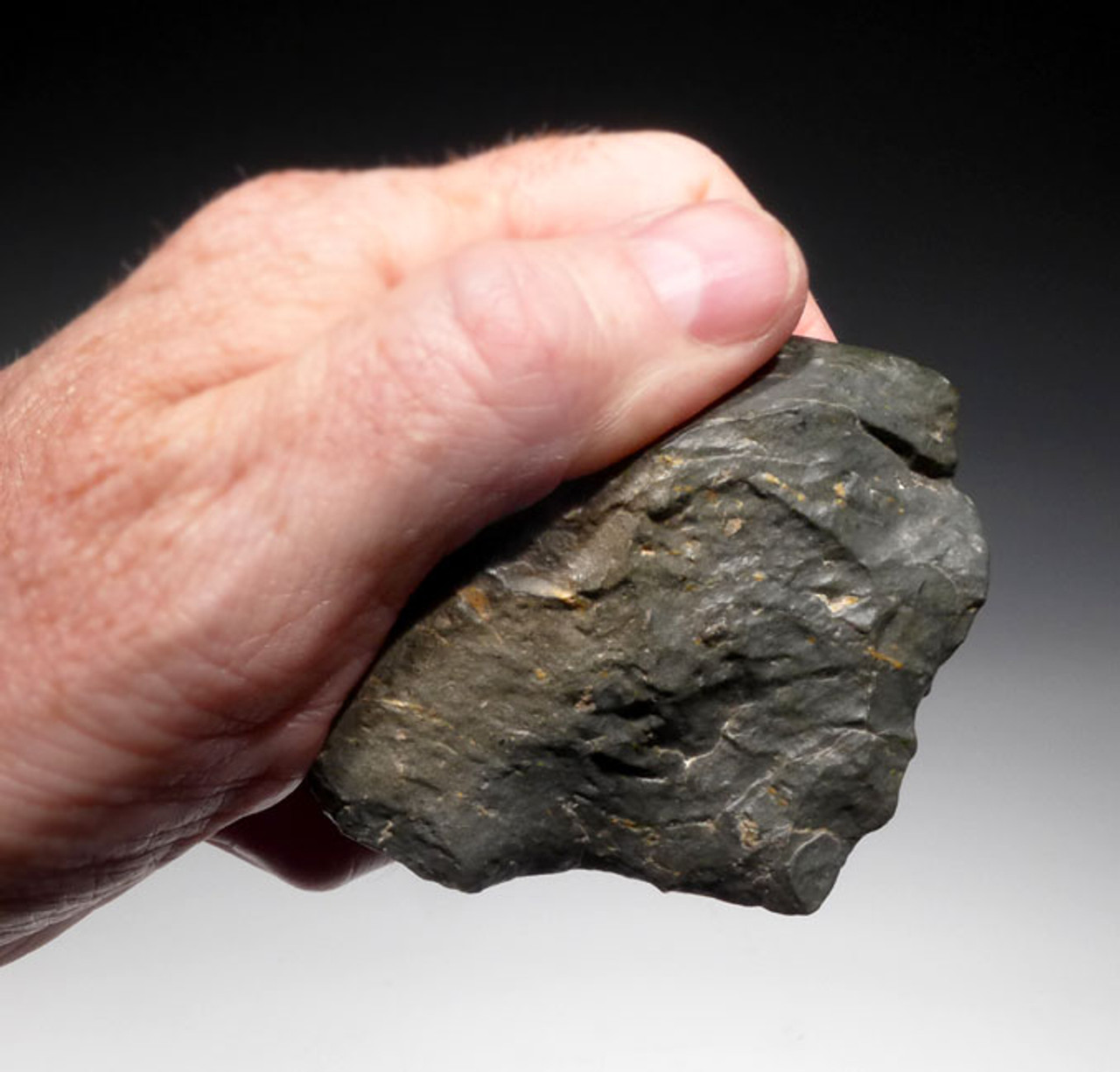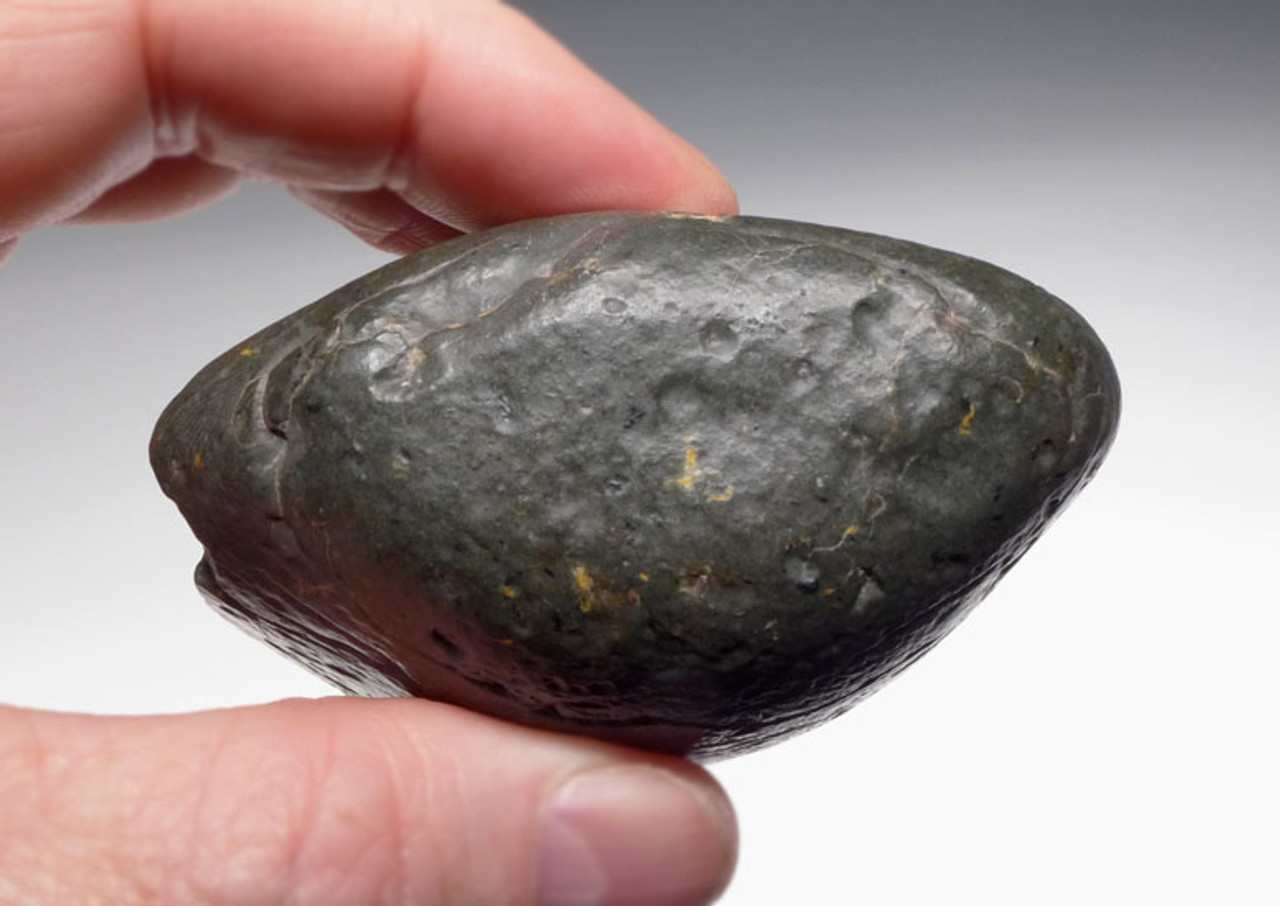Product Description
ITEM #
|
PB103
|
||
ID
|
Oldowan Pebble Tool
|
||
FOUND
|
Exposed Site - Sahara Desert, NW Africa
|
||
AGE
|
LOWER PALEOLITHIC: 1.2 million - 800K years ago
|
||
SIZE
|
3" x 2.5" x 1.5" thick
|
||
CONDITION
|
INTACT AND COMPLETE - NO REPAIR OR
|
||
NOTE
|
FINEST TEXTBOOK EXAMPLE WITH PERFECT,
|
||
Actual Item - One Only
Comes with a certificate of authenticity / information sheet |
|||
CLICK HERE TO LEARN MORE ABOUT OLDOWAN PEBBLE TOOLS
This is a classic OLDOWAN PEBBLE CHOPPER but in a reduced size. It is made from an unusual (and BEAUTIFUL!) green igneous rock with holes and flow layers, both filled with desert sediment testifying to its authenticity. There is a SPECTACULAR wind erosion feature giving the surface a 'melting ice cream" lustrous appearance, called "desert varnish", from millennia of exposure to the Saharan wind. It is just an incredible tool to hold and not only fits in the hand perfectly but it has a masterfully made chisel end made by several opposing strikes. You could chop a stick in two with such a tool, or use it to butcher smaller bones of hunted game. The grip is perfect and natural cobble outside makes for a very comfortable grip. Workmanship and form is BETTER THAN MUSEUM QUALITY. NO REPAIR and NO RESTORATION - AS MADE! SCARCE and with our highest recommendation.
Oldowan pebble tools are THE FIRST recognized tools invented by the earliest of primitive humans from Africa. These tools are seldom seen in private collections or public exhibits. Oldowan sites exist in numerous regions of the continent but it takes a very knowledgeable collector to be able to weed out all the naturally-occurring rocks that litter the ground from an actual pebble tool specimen. As the origin of humanity and as the earliest of tool technologies, this African Oldowan specimen poses a very important potential addition to any advanced collection of Paleolithic artifacts. It was made by the African Homo erectus known as Homo ergaster. African pebble tools are not common on the market compared to their much later Acheulian relatives. This specimen is part of a very limited collection we acquired. Despite the fact that there are probably more Oldowan tools in Africa compared to the European specimens we offer, very few African pebble tools are collected or available for public acquisition. This offering poses a rare opportunity to own an AUTHENTIC example of the first known tool type made by humans - a window into the mind and design thought process of our earliest ancestors.
No one can doubt the importance that pebble tools hold in the history of human development. Their very emergence in Africa nearly two million years ago allowed the earliest humans to butcher animals for their meat - the needed nourishment that allowed humans to survive and flourish to one day populate and rule the earth.
 US DOLLAR
US DOLLAR
 EURO
EURO
 AUSTRALIAN DOLLAR
AUSTRALIAN DOLLAR
 CANADIAN DOLLAR
CANADIAN DOLLAR
 POUND STERLING
POUND STERLING


















